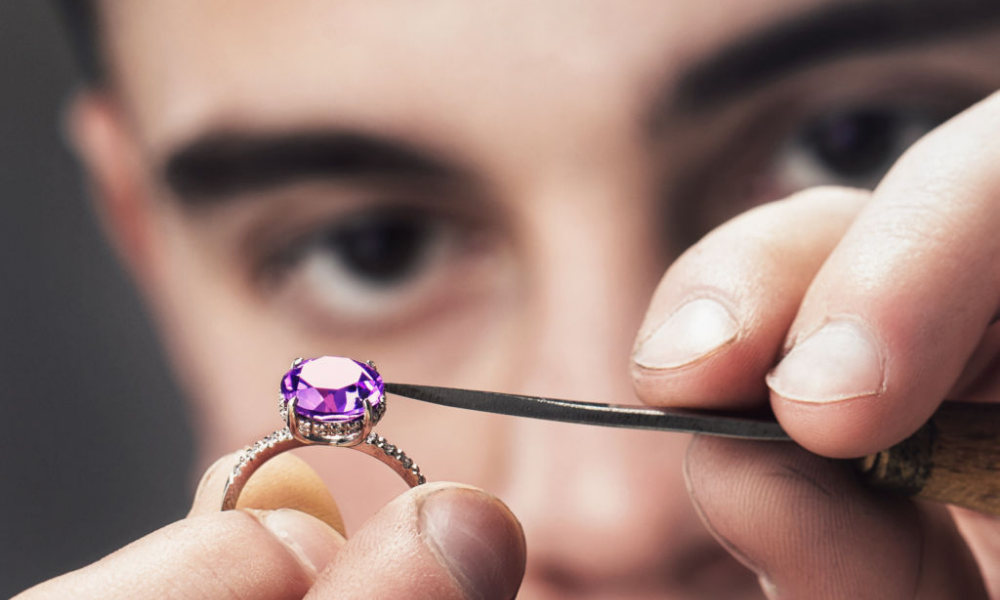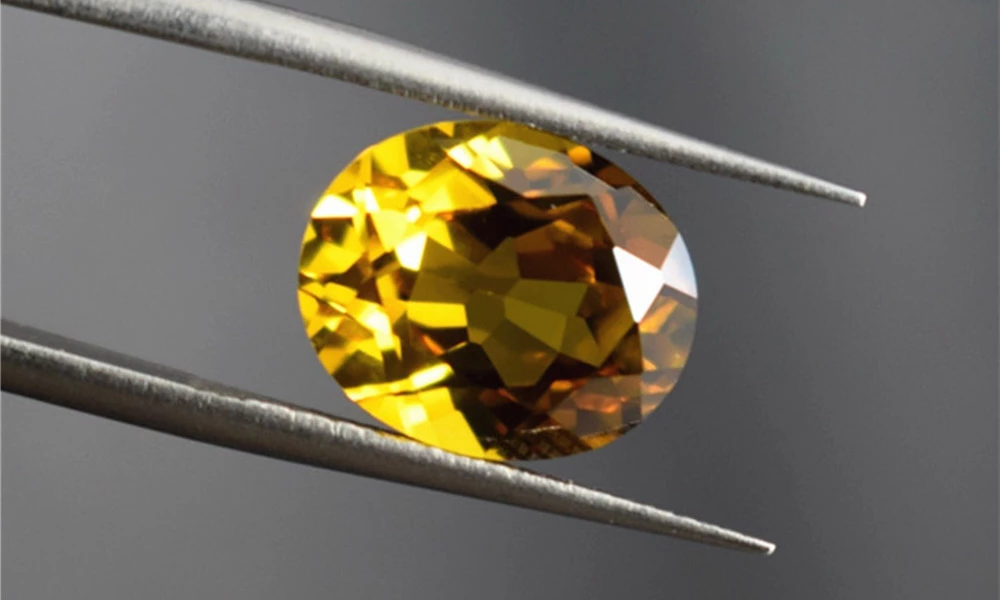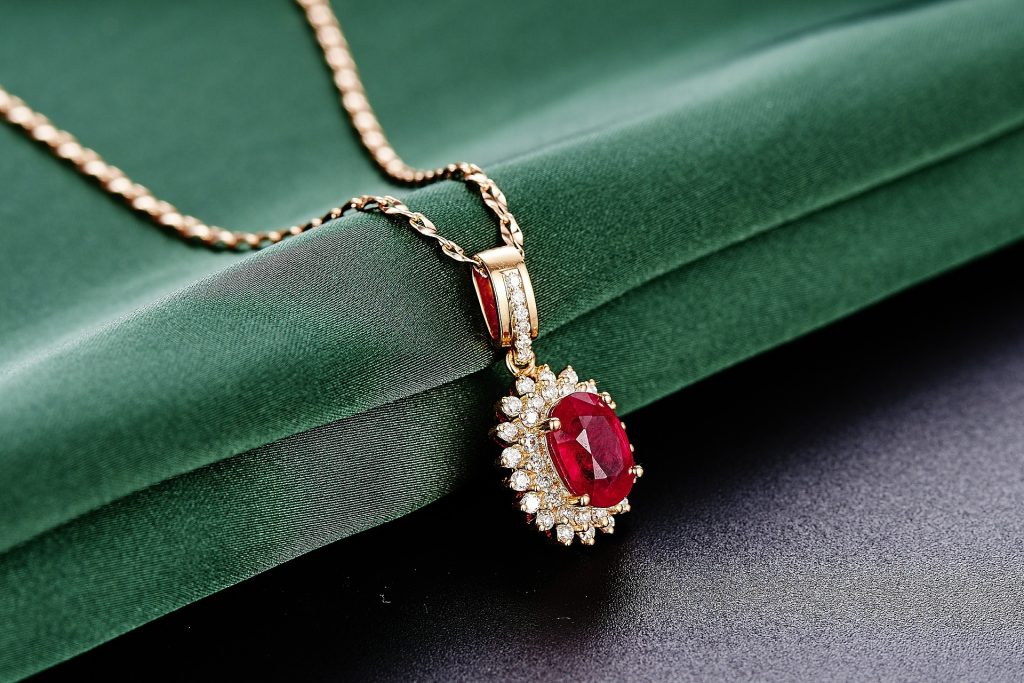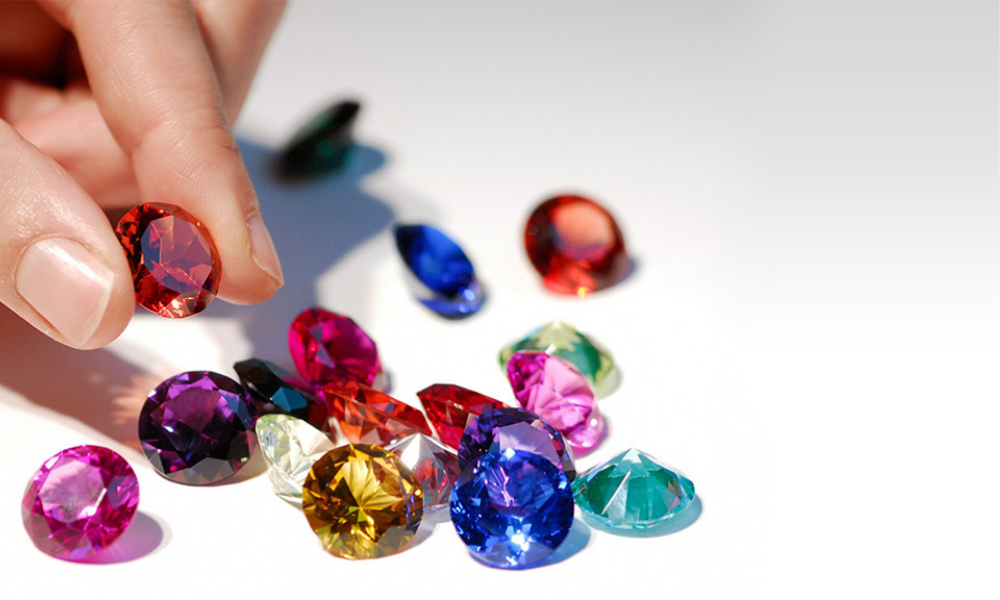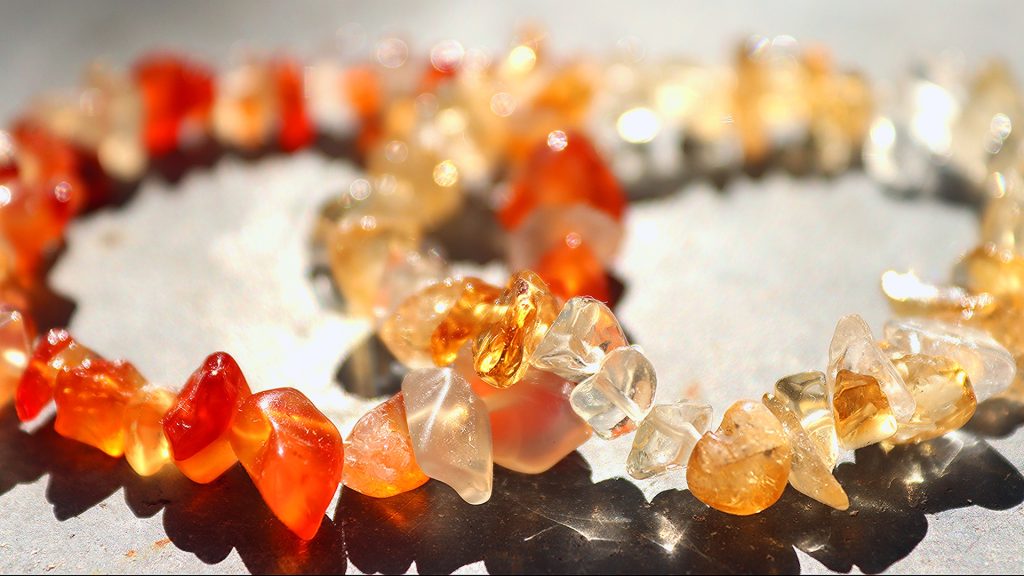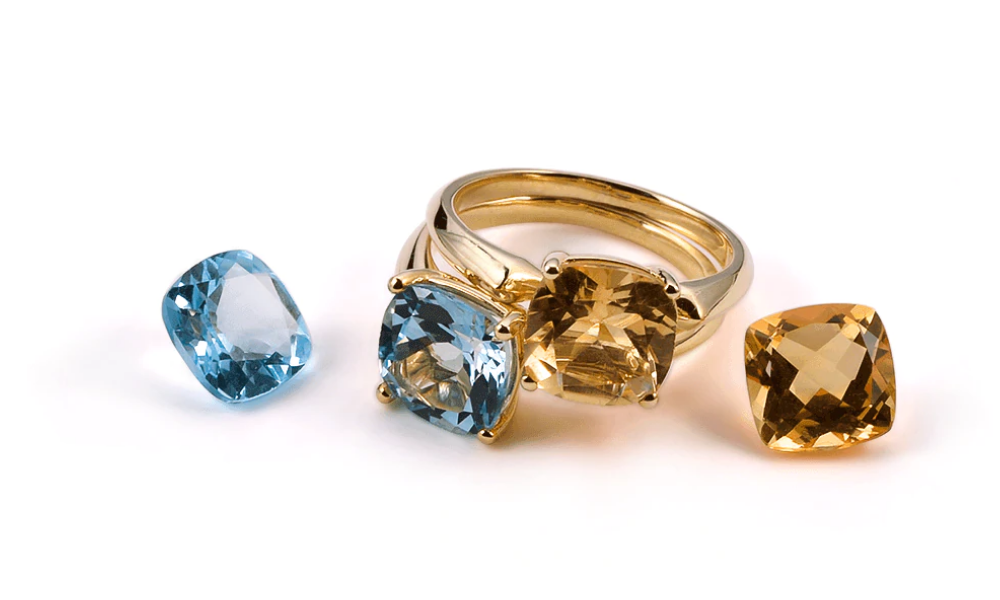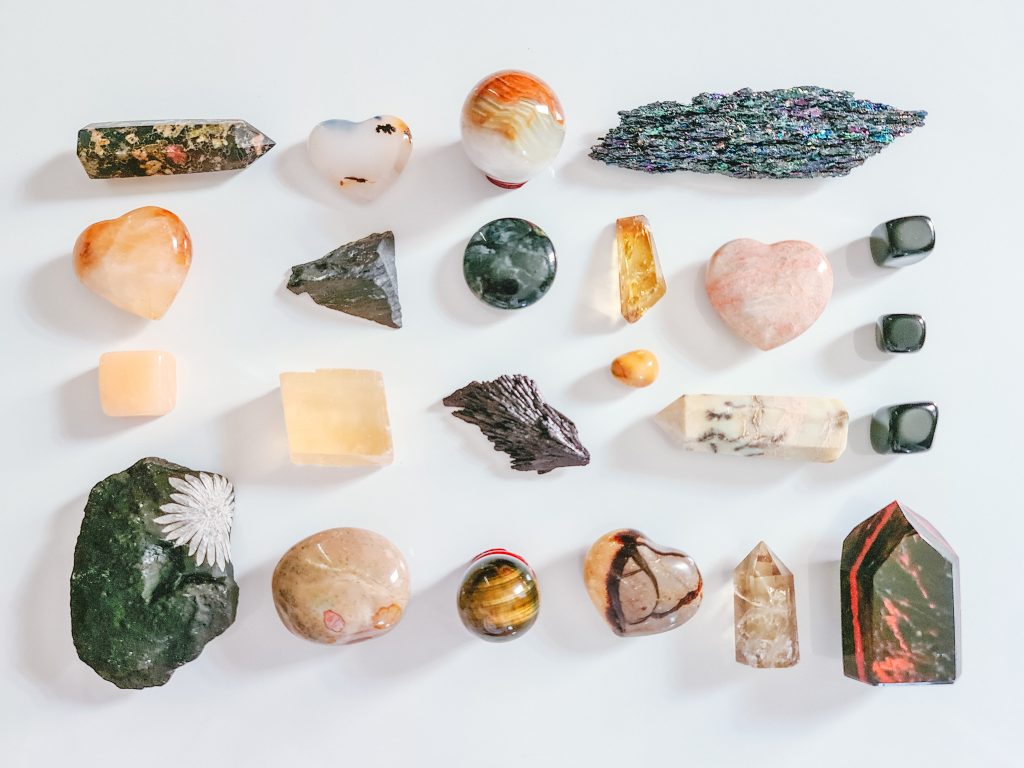The “4 C’s” of a gemstone are the carat, color, clarity, and cut, which are used to determine its value. Understanding all four of these is essential background information for the customer. If you are purchasing an expensive stone with a price in the four-figure range or higher, purchase it loose so that you may watch it being weighed and completely examine it before making your purchase.
Color, clarity, cut, and carat weight are the four criteria used in gem grading (weight). These characteristics are used by gemologists to assign grades to gemstones. I’ll describe how we gemologists analyze each of these characteristics and how buyers might benefit from this knowledge. However, you must first realize that gemstones are classified according to the rarity of their characteristics:
The Four C’s Of Gemstone Grading
Color
The most important factor influencing the price of any gem variety at a particular size is color. Hue, saturation, and tone are the three fundamental components of a color. Color is what we usually think of when we think of hue. The name of the stone’s color is used to characterize it (i.e., red, orange, yellow, green, blue, and violet.) Some colors are described by mixing hues such as blue-green, red-violet, blue-violet, and so on, which are in-between two colors next to each other in the spectrum.
Saturation (or intensity) refers to the amount of color present. The gemstones with the most significant color saturation, or the brightest hue, are the most valuable of each kind. As the saturation level is reduced, the price drops. Emerald prices are highly influenced by saturation; the brighter the green, the greater the price; when the color approaches a “mossy” green, the price drops rapidly.
The gemstones with the most significant color saturation, or the brightest hue, are the most valuable. As the saturation level is reduced, the price drops. Emerald prices are highly influenced by saturation; the brighter the green, the greater the price; when the color approaches a “mossy” green, the price drops rapidly.
The lightness or darkness is described by tone (or value). The terms tint and shade describe lighter and darker values, respectively. There is a perfect tone for each gem variety. Stones that are too dark or too bright will lose value when their tone deviates from the “ideal.” The best amethyst has a medium-dark violet color; the price declines when the stone becomes closer to a pastel violet tint or a very dark violet.
The more pure and saturated a hue is, the more expensive it is. The most costly rubies, for example, areas as red as possible with no violet or orange overtones, and they shouldn’t be too bright or too dark. The same is true for emeralds: the optimum color is a vivid green with no yellow or blue overtones that are neither too light nor too dark.
As a buyer, you must be well-informed about the terms you are purchasing a gemstone. First, take note of the background color against which you are examining the stones. The optimum background color for examining any gem material is white.
Second, look at the light source utilized to view the stone. If you’re in a jewelry store, the light may come from a spotlight or another very bright light source. When you look at the stones under this bright lighting, you can see their full brilliance and scintillation potential. Wow, it’s just stunning.
Clarity
The internal topography of inclusions within the gem or surface flaws is exact. Tiny crystals of the same mineral, other mineral crystals, small liquid-filled pockets, internal fractures or cleavages, or any other visible components inside the stone are all examples of inclusions.
Clarity refers to the internal topography of inclusions within the gem or the flaws on the stone’s surface. Tiny crystals of the same mineral, crystals of a different mineral, tiny gas bubbles, microscopic liquid-filled, or any other visible materials inside the stone are inclusions. These can take the form of a single crystal or tiny microscopic “clouds.” Internal fractures are frequent in several gem kinds; if they are significant or widespread, reconsider purchasing the gem because its durability may be compromised.
Inclusions in a diamond have a significant impact on its value; however, inclusions in colored gemstones have a lesser impact. Some gemstones have apparent faults that detract from the beauty of the stone, while others have microscopic inclusions that do not.
There are no strict rules for grading clarity in colored gemstones. Without magnification, colored gemstones can be examined in a couple of ways to measure clarity. Place the stone table on a white surface or a piece of paper first. Any significant inclusion will be readily apparent. The second approach involves a penlight with a flat region where the light comes out; set the stone table over the light source; most inclusions will become highly visible when the light is turned on.
Cut
The cut of a gem refers to its shape, proportions of its many sections, finishing touches such as facet relationships, and polish. The cut is crucial in bringing out the full potential of a gemstone’s beauty.
Rounds, ovals, cushions, pears, emerald or octagonal cuts, hearts, marquise, hexagons, half-moons, triangles, and carved jewels are just a few available options today. The crown, girdle, and pavilion are the three essential elements of a typically faceted gemstone.
The critical angle of each transparent gem material is a function of the refractive index. The slope of the crown and pavilion angles must be trimmed to those essential degrees to produce optimum brilliance from a stone.
Several factors influence cut-in-colored gemstones; achieving 100% brightness may not be the ultimate goal when cutting a colored stone. The rough material’s overall color of a light-colored gemstone can be darkened by profoundly cutting it. Alternatively, the cutter may cut the gem for maximal yield, disregarding all other parameters. You must examine the gemstone and determine why it was cut a certain way.
A well-cut gemstone reflects the maximum amount of brilliance imaginable. A gem with a shallow cut will have a dead patch in the middle where light escapes through the back. A deep stone will absorb too much light and not reflect it, making it difficult to set. It will also be strongly bellied. You will be charged for excess carats that do not contribute to the attractiveness of the gemstone. In moderate and pricey gemstones, the rough shape frequently determines the finished shape of the gemstone.
Buff tops are stones that are carved with cabochon tops and faceted bottoms. Many carved gemstones are available nowadays; they can be cabochon or faceted with carving. Many stones are aptly referred to as designer stones. Some cutters are true artisans who design their range of gemstones cut in their unique style. Some of them are autographed. A very well-cut, distinctively cut, or marked stone will command a higher price.
Carat Weight
It is equivalent to one-fifth of one gram in weight, represented by the term “carat.” A hand-held balance scale with two pans was initially used to weigh gems at their discovery. The gems were cooked in one pan while the carob beans were cooked. Initially, the word carat was derived from the word “carob.” When it comes to weighing gemstones, we now employ computerized digital scales.
Carat weights on gemstones should be given to the hundredth of a carat, for example, l.46 carats or 8.65 carats, not to the thousandth of a carat. Suppose one is purchasing a piece of jewelry that has many stones. The total carat weight should also be indicated to the closest one-hundredth of a carat unless otherwise specified. Historically, carat weights were occasionally stated as fractions of a carat. It is possible that a gemstone was sold as 5/8 carat, which should be equivalent to precisely 0.625 carats. However, in many cases, the weight was anywhere between 0.60 and 0.65 carats in actuality. This level of inaccuracy is now considered unacceptable. Because gemstones are valued by the carat, the carat weight must be given to the hundredth of a carat or above.
A point is a tenth of a carat in weight equal to one carat, and a carat is a unit of measurement consisting of one hundred points. The carat weight of jewelry offered through various catalogs is not always specified; this presents a severe dilemma for the customer, who would not know the weights of the diamonds being sold. To account for each gemstone mineral’s unique density, multiple gemstones of the same millimeter size will have a different carat weight.
Where Are Gemstones Cut?
The majority of the world’s gemstones are mined and cut in developing countries using cheap labor. The quality of a gemstone’s cutting is primarily determined by where it is cut, significantly impacting the stone’s price.
Brazil is a significant source of tourmaline, topaz, aquamarine, emerald, amethyst, citrine, peridot, beryls, andalusite, among other gems; jewels made in Brazil may be finely cut, although most low-cost gems are cut mediocrely. Diamonds, tourmaline, emerald, topaz, garnets, amethyst, tanzanite, and other gemstones are mined in African countries, but most rough are shipped and cut abroad. The majority of the world’s supply of beautiful rubies and sapphires comes from Sri Lanka, Thailand, India, and Burma, with the majority of them being cut in the nation of origin. Many stones cut in Burma or Sri Lanka are recut in Bangkok, Thailand! The majority of sapphire and opal mined in Australia is sent for cutting. Thailand is now the world’s leading cutting hub. Thai gem dealers scour the globe for raw gems to cut in Thailand. The quality of Thai cutting varies from mediocre to excellent. German gem cutting has a long history, and the quality of German cutting is generally high to exceptional. Hong Kong imports gem raw and have a tiny fine-cutting and carving industry.
What Gemstone Holds Its Value?
Some of the so-called semi-precious gems, such as rubies, sapphires, and emeralds, are uncommon findings that can command a more excellent price than the big three.
Gemstones are a reliable store of value that is also compact, portable, and discreet, making them a good choice when the stock market is down and the value of a currency is dropping. The value of a high-quality Burmese ruby or Ceylon sapphire will never diminish, even though gemstones are not as liquid as gold.
What Criteria Are Used To Grade Gems?
The letter grading system is used to classify gemstones. AAA is the best possible mark, while D represents the lowest possible grade. AAA grade gemstone beads are typically more expensive, higher quality, and near-perfect than lower grade ones. Color-enhanced gemstone beads are rare, and most of them are faceted in shape.
Colored gemstones are appraised and rated identical to diamonds: according to their cut, clarity, color, and carat weight. After examining the gemstone based on these four criteria, a final grade is assigned to the gemstone in question. The final grade is assigned on a scale ranging from AAA to D, with AAA denoting near-perfect quality and D denoting inadequate quality.
How Are Gemstones Cut?
Every jewel starts as a shard. Even though the stone will be cleaned, polished, and otherwise fashioned into a stunning diamond, its raw state will usually influence the final result. Long, thin rough is frequently faceted into rectangles, delicate jewels such as emeralds are cut in ways that favor durability, and opaque stones are sometimes sculpted rather than faceted. All gemstones are cut to bring out their most outstanding qualities and, in many cases, to maintain their carat weight.
Before being cut, the rough is separated by size, and firmly incorporated material and traces of host rock are eliminated. Depending on how delicate the rough is, a small hammer or pliers may be used. After trimming, the cutter will inspect the stone for color zoning, probable cleavage planes, and other characteristics that could affect the final product’s look.
Depending on the cutter’s decision, the rough may be left as is or separated into smaller pieces. After that, a process known as performing is used to prepare the stone for faceting. This process significantly impacts the stone’s ultimate shape and is handled by professional cutters. The stone is tied to a dipstick device and molded against a lap, which is a grinding or polishing wheel. A faceting head is frequently affixed to the dipstick, which aids in holding the stick and the jewel at the precise angles required to form the stone.
The gemstone is polished after it has been faceted, and this technique helps bring out the shine and color of the gemstone by smoothing the surface as much as possible. After polishing, the gemstone should be cleaned to eliminate any dust or liquids used to lubricate and cool it during the cutting process. The stone is ready to be set into jewelry now that it has been faceted and polished.
Conclusion
When it comes to optimizing the beauty of a stone, the finish is critical. Facets should have a consistent shape and properly align with one another. This results in the creation of scintillation in the gem. Scintillation is the reflection of light off a facetted surface, and it occurs naturally and has the appearance of the flashing of stars. A gemstone’s surface sheen and scintillation are both greatly influenced by how well it is polished at its final stage. Faceted gemstones, which are incredibly inexpensive, rarely have a high level of polish, and when they are used and grow dirty, they appear incredibly dull. Well, polished gems have a substantially brighter surface luster.
Other factors that influence rarity include the quantity of a particular gem type and the age of the stone. Several gemstones are more numerous and more easily accessible than others due to their relative abundance and accessibility. Much of the gems are discovered in isolated areas, making mining them virtually impossible. It is also possible that the economic and political conditions of the regions where gemstones are found will limit the accessibility of specific gemstones. Modern technology enables the manufacturing of a wide variety of jewels from mineral elements at a lower cost than previously possible.

